The Ocean is in trouble!
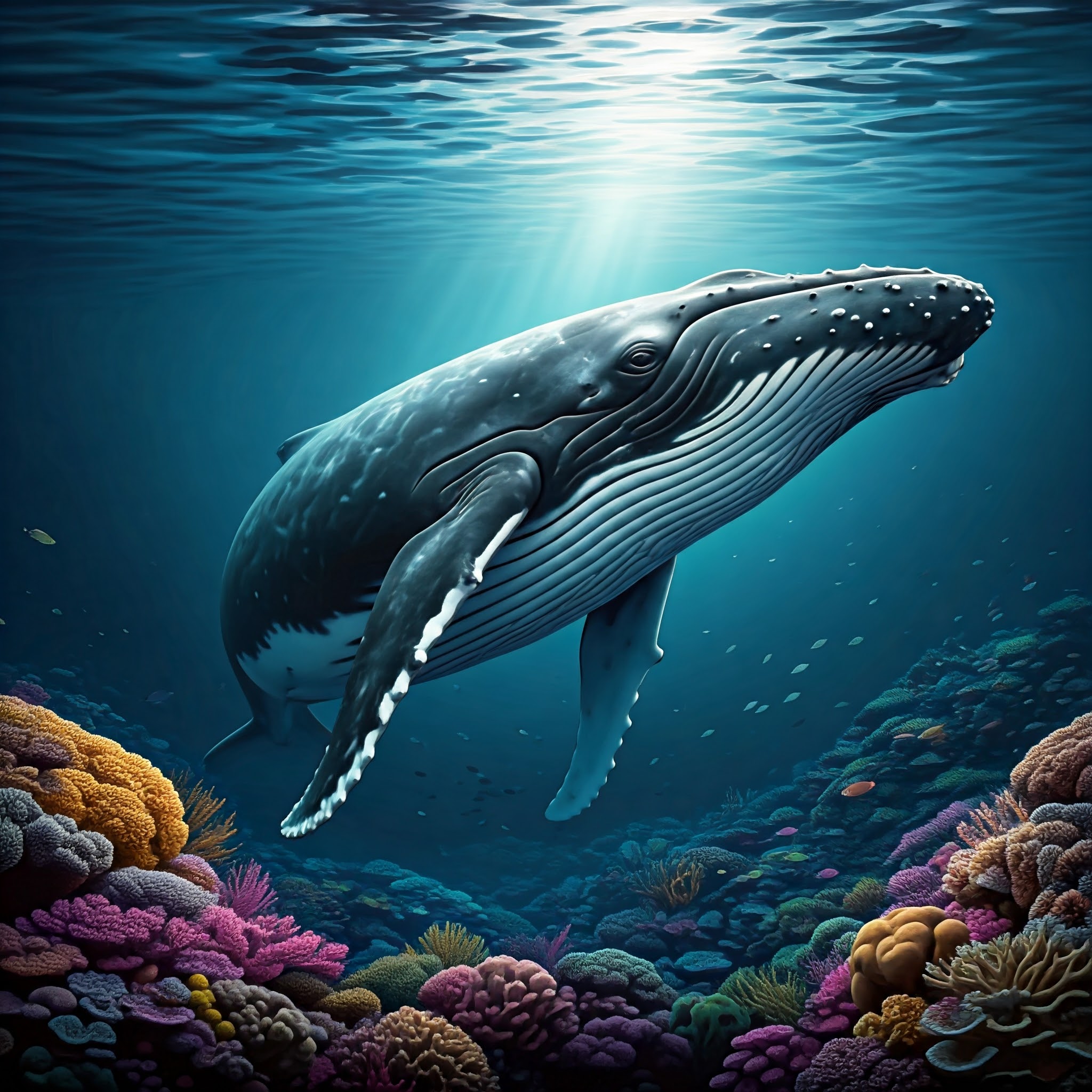
You might think the ocean is huge and can't be hurt, but that's not true. We're taking a lot from it while polluting it.
Many animals, like sharks, whales, and sea turtles, are endangered, which means they're in big trouble. If we don't help, they might vanish forever. How would you feel if your favourite toy was about to disappear?
Animal SOS: The IUCN Red List
IUCN stands for the International Union for Conservation of Nature. That’s a big name! But what does it do? A huge team of scientists and nature experts from all over the world work together to check how animals, plants, and even entire ecosystems are doing! The most important thing the IUCN does is the Red List that helps to understand which creatures need help the most before it's too late.
Here are the levels - from most at risk to safest - with a sea creature for each!
BE A HERO
A BIT OF HOPE
Some ocean animals need our help, and you can make a difference! When we all work together, it feels like we're giving the ocean a big, hopeful hug!
EXTINCT
(EX)
GONE FOREVER
No more left anywhere in the world.
They're like a story that ended too soon.
They're like a story that ended too soon.
Steller Sea Cow
This giant, gentle sea creature disappeared forever in the 1700s.
EXTINCT IN THE WILD (EW)
ONLY IN SPECIAL CARE
Some rare species don’t live in the wild any more! They only survive because caring grown-ups protect them in safe places. They’re precious treasures that need our help to stay around.
No marine animals are now listed as EW
CRITICALLY ENDANGERED (CR)
SUPER DUPER DANGER
These animals are in big trouble, they’re on the brink of extinction. Without quick help, they could be gone for good. Think of them as someone teetering on the edge of a cliff.
PACIFIC PILLAR CORAL
This beautiful coral, which creates colourful homes for many fish, is disappearing because its ocean waters are getting too warm.
ENDANGERED
(EN)
BIG DANGER
These animals are in danger, but there's still time. They are like someone sliding down a slope, not at the edge yet, but getting close.
GREEN SEA TURTLE
Beautiful but in danger because of human activities that destroy their habitat .
VULNERABLE
(VU)
A BIT WORRIED
These animals are at risk and need watching. They’re like a friend feeling unsteady that we may need to help soon.
NARWHAL
The "unicorn of the sea" is vulnerable to climate change and hunting.
NEAR THREATENED
(NT)
ALMOST WORRIED
These animals are doing okay right now, but we're watching them because they might need more help soon! It's like a cloudy day, mostly fine, but we're ready if a storm comes.
EMPEROR PENGUIN
They need sea ice to raise their chicks and find food. As the Earth gets warmer, the ice melts, making it harder for them to survive.
LEAST CONCERN
(LC)
TOTALLY FINE!
Hooray! These animals are doing great! There are lots of them swimming happily in the ocean. They're like being in a big, busy playground with friends everywhere!
BOTTLENOSE DOLPHIN
These dolphins are doing well: they adapt easily to different places. They’re smart, social, and playful, which helps them stay safe in groups
DATA DEFICIENT
(DD)
TOTALLY FINE!
We don't have enough information about these animals to know if they're in trouble. They're hidden gems in the ocean, and we're looking for clues to find out more about them.
GOBLIN SHARK
Even though they look spooky and live deep in the ocean, goblin sharks are not in danger. They live far from humans, which helps keep them safe.
NOT EVALUATED
(NE)
ALMOST WORRIED
These animals haven’t been checked yet. The ocean is vast, with many secrets still to discover!
NUDIBRANCHS
Tiny and colourful sea creatures that look like underwater rainbows! But scientists still don’t know much about them; there’s much more to discover!


ENDANGERED
SPECIES
+5,500 Marine Species
are in serious trouble
14 species extinct
in the last 500 years
in 2024
+200 critically endangerad species
+300 endangered species
+700 vulnerable species
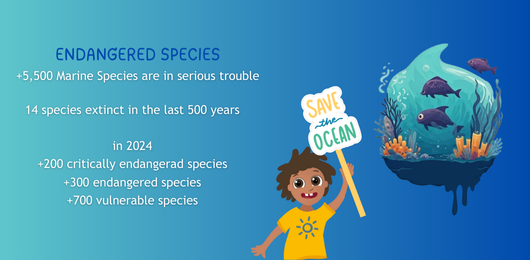
ENDANGERED SPECIES
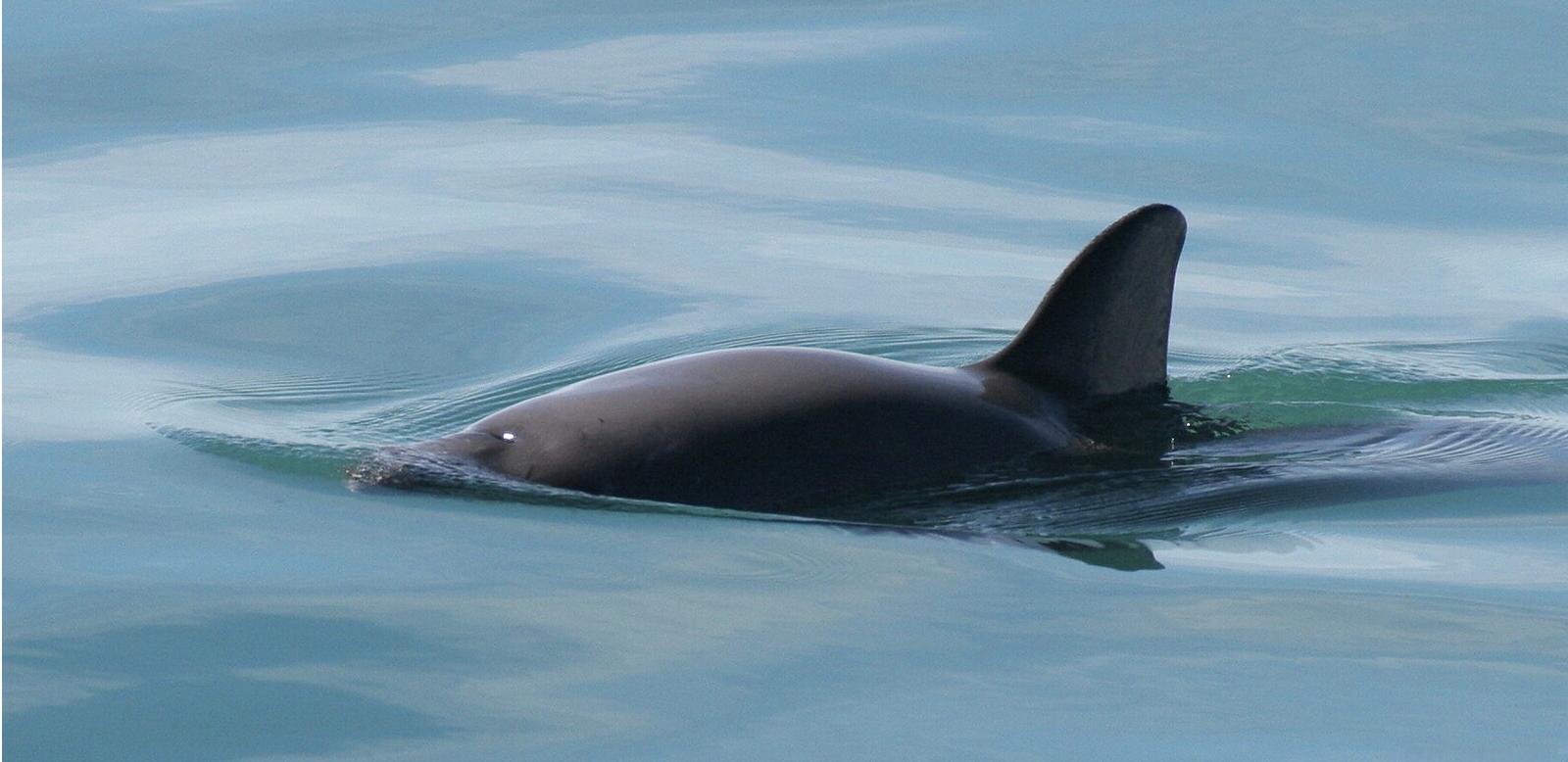
VAQUITA
The vaquita is the smallest of all cetaceans. It lives in the Gulf of California. In 2024 the estimated population was of 8 to 13 individuals
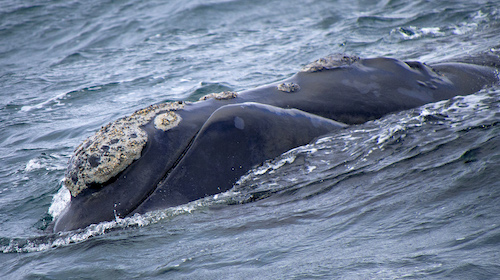
NORTH ATLANTIC RIGHT WHALE
There are 372 surviving North Atlantic Right Whales, according to scientists. This is a tiny good news, because the number has grown slightly.
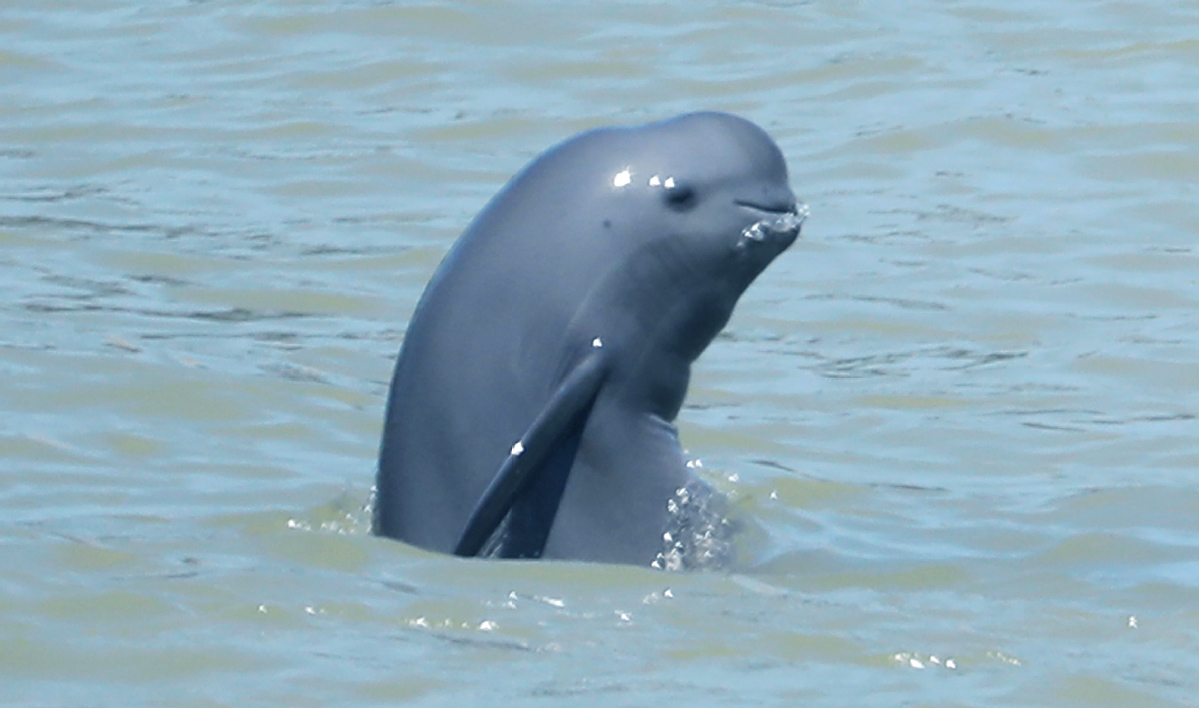
YANGTZE FINLESS PORPOISE
The Yangtze finless porpoise lives in the Yangtze River, in China. Only 1,249 are left. They're facing threats like pollution, boat traffic, and dams.
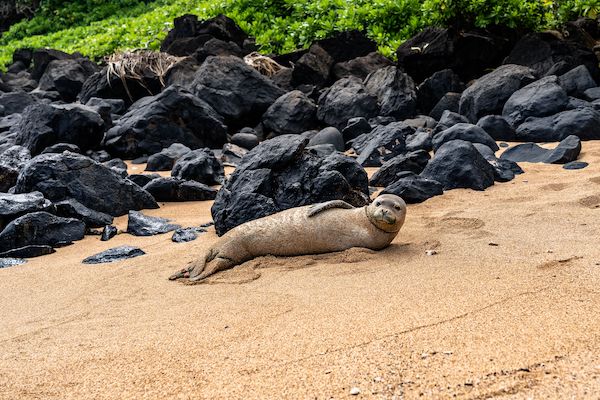
HAWAIIAN MONK SEAL
The Northwestern Hawaiian Islands harbour a small number of monk seals, but these animals are at risk from pollution and fishing nets.
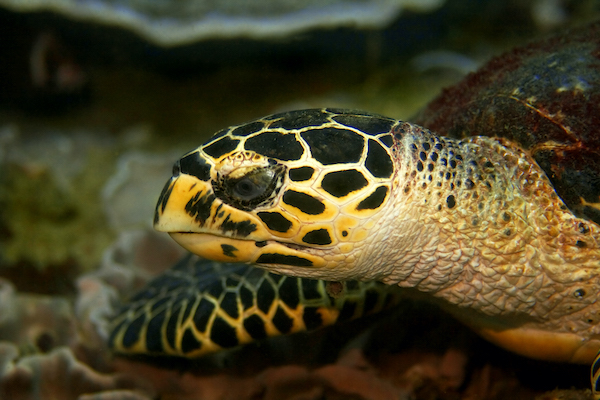
HAWKSBILL TURTLE
Hawksbill turtles are one of the most endangered sea turtles. People used to hunt them for their beautiful shells, and now there are only about 8,000 adult females left.
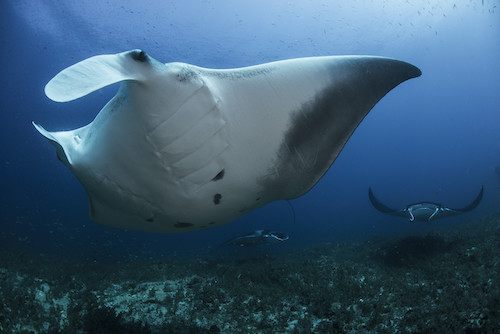
GIANT MANTA REY
Giant manta rays are gentle giants of the ocean. People are fishing them for their gills, and they don't have many babies. There are only about 1,500 of them left in the world.
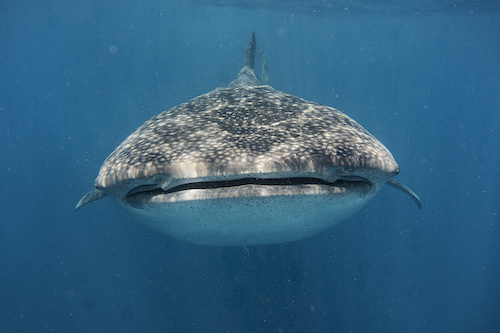
WHALE SHARK
Whale sharks are the biggest fish in the world, but sadly, their numbers are going down. People are fishing them for their fins and other parts. There are less than 200,000 of them left.
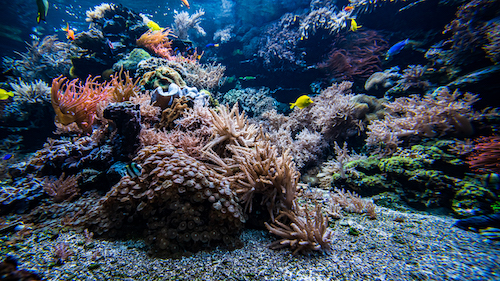
CORAL REEF
Coral reefs are at risk. Warming, pollution, and overfishing hurt them and building on coasts or touching coral makes it worse.
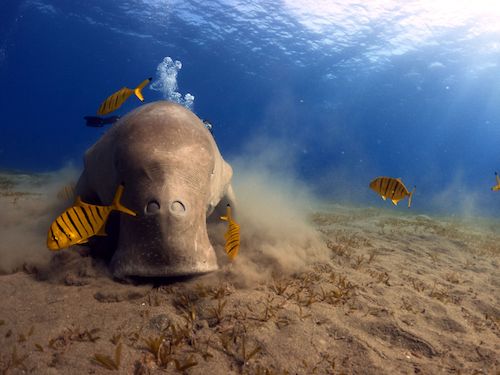
DUGONG
Dugongs are big, gentle ‘sea cows’ that munch seagrass. But pollution, fishing nets, and boat strikes are hurting them. Only 100,000 are left.
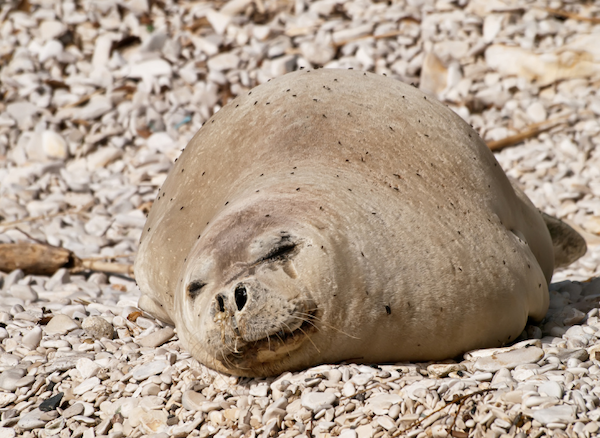
MEDITERRANEAN MONK SEAL
This monk seal has faced many challenges over the years. There are less than 700 left!
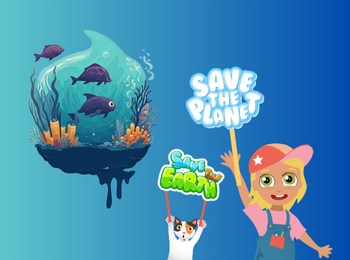
THE CAUSES
what makes a
species endangered?
Loss of habitats
Spread of disease
Pollution
Overfishing practices
invasive Species
Climate change
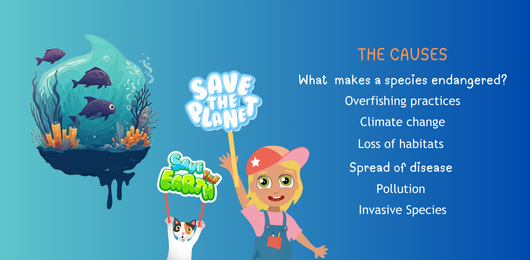
THE CAUSES
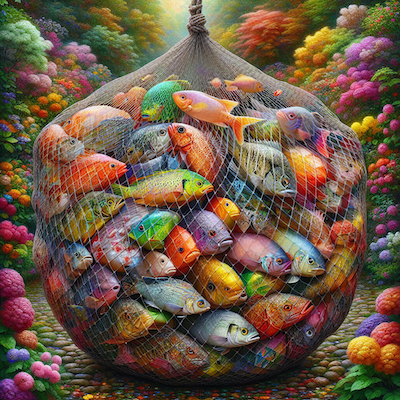
OVERFISHING
Imagine the ocean as a fish pond. If we catch too many fish, there aren’t enough left to grow and have babies. That’s overfishing, and it’s hurting ocean animals, especially in the Greek sea where our Bubble Buddies live.
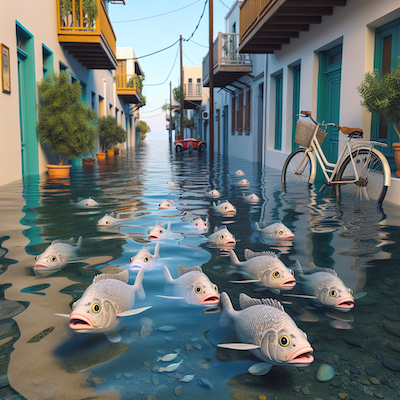
CLIMATE CHANGE
Climate change warms the sea, which can melt ice, raise sea levels, and shake up ocean currents (underwater rivers) that move heat and change our weather.
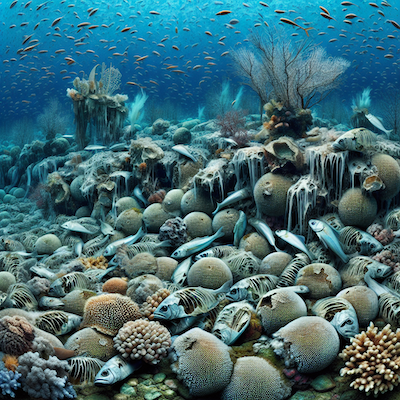
SPREAD OF DISEASES
Like us, ocean animals can get sick, sometimes lots at once. Pollution (plastic and chemicals) dirties the water, and warmer seas from climate change stress them. When they’re weak, diseases spread more easily.
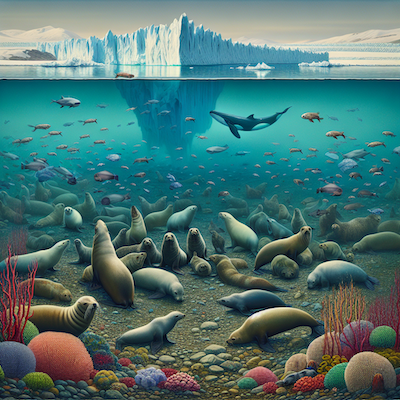
LOSS OF HABITAT
Big storms, hurricanes, strong winds, and huge waves can smash coral reefs and wash away wetlands, so animals lose homes and food. Droughts and heat waves warm the water, making it hard to survive. Some animals must move to cooler places
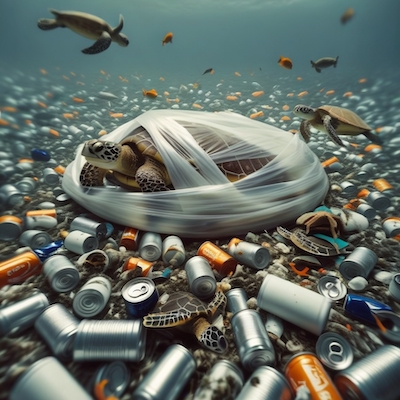
POLLUTION
The ocean suffers from various forms of pollution, including plastic waste, fertilisers, dirty rainwater, noise, and chemicals.
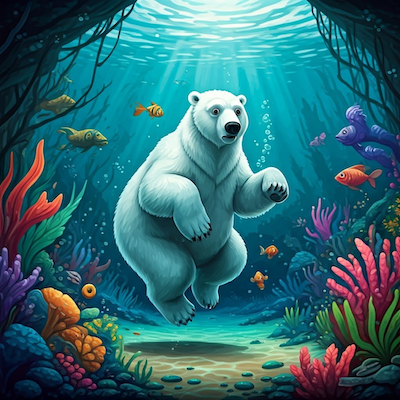
INVASIVE SPECIES
Invasive species are uninvited guests. Like a polar bear on a warm coral reef: it doesn’t belong! They don’t fit and can harm local species by eating too much food, taking homes, or spreading disease
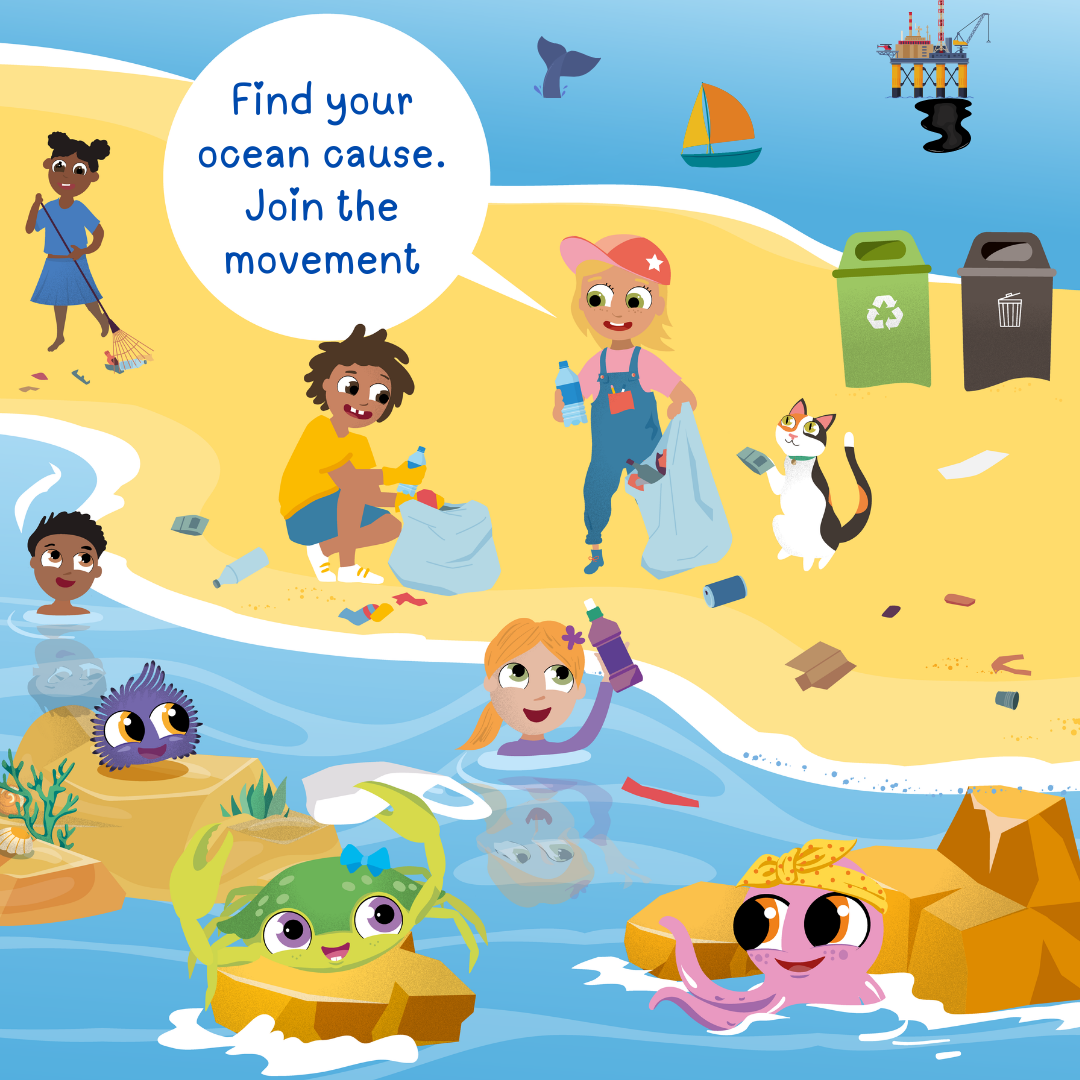

Small Actions, Big Ocean Impact
Have you ever heard of the butterfly effect? It's a simple concept: small actions can have big consequences. Imagine a butterfly flapping its wings. That tiny flap can cause a ripple effect, leading to big changes, like a storm on the other side of the planet!
As a child, you know that you can't do everything to save the oceans, but you can do a lot. You can talk to your parents, teachers, and friends about ocean conservation. Together, we can make a difference.
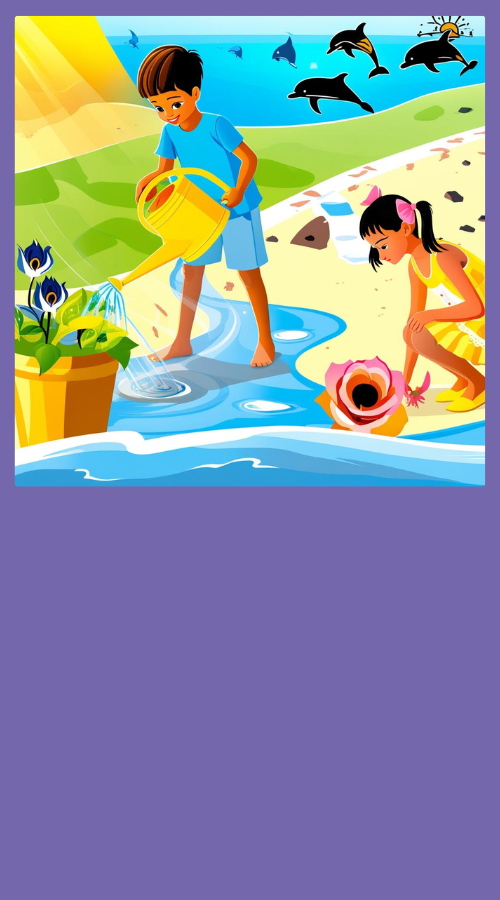
Drop by Drop,
Keep the Flow
Let's save water, a precious resource!
Fix leaky taps, take quick showers, and water your plants wisely.
Every drop counts!
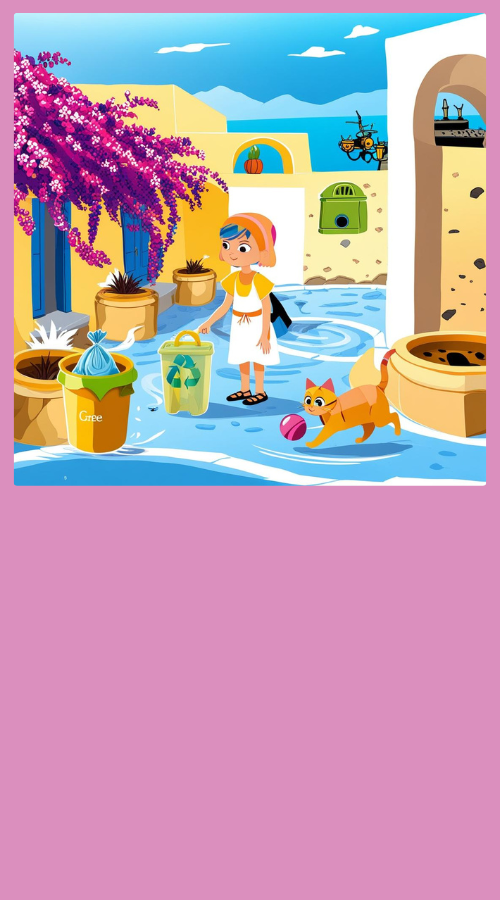
Reduce, Reuse,
Recycle
Let's be kind
to our planet!
We can do this by using less stuff, using things again, and putting the right things in the recycling bin.
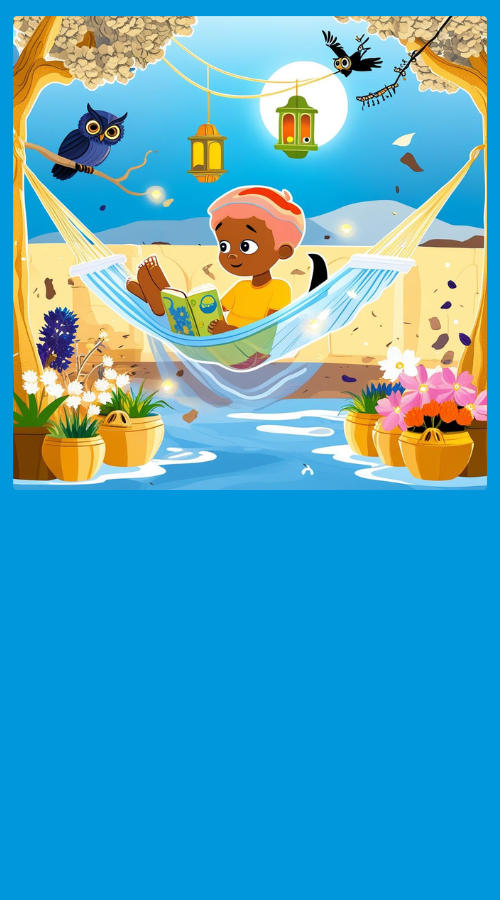
Save Energy,
Save Earth
Let's save energy! When you're done with a light or a gadget, turn it off. It's like giving them a little rest. And let's choose smart appliances that use less energy, so we can help the planet.
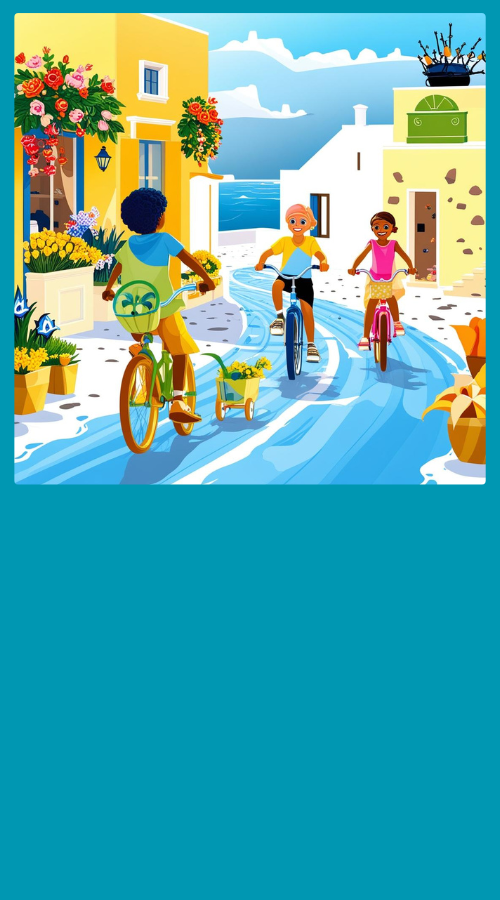
Go Green,
Move Clean
Let's keep
the air clean!
We can do this by walking, biking, sharing rides, or taking the bus or train.
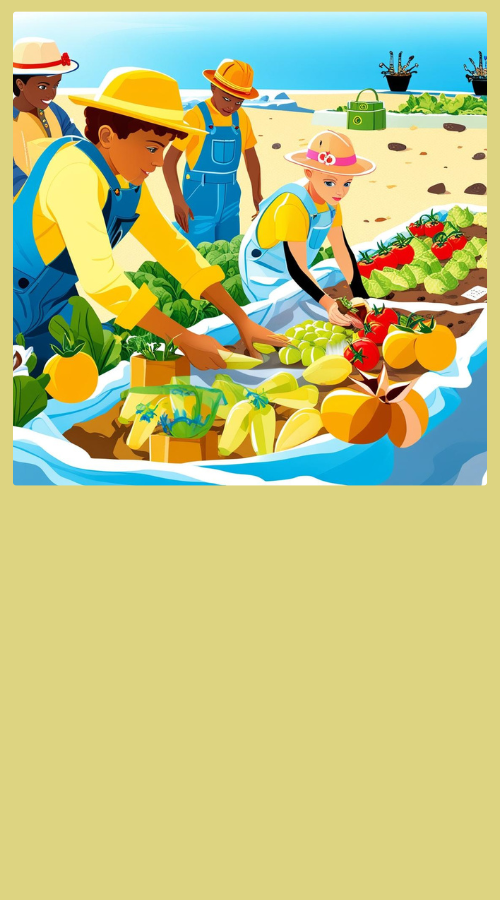
Eat Wise,
Live Green
Let's eat healthy and help the planet! We can do this by eating less meat, choosing foods grown nearby, and not wasting food.
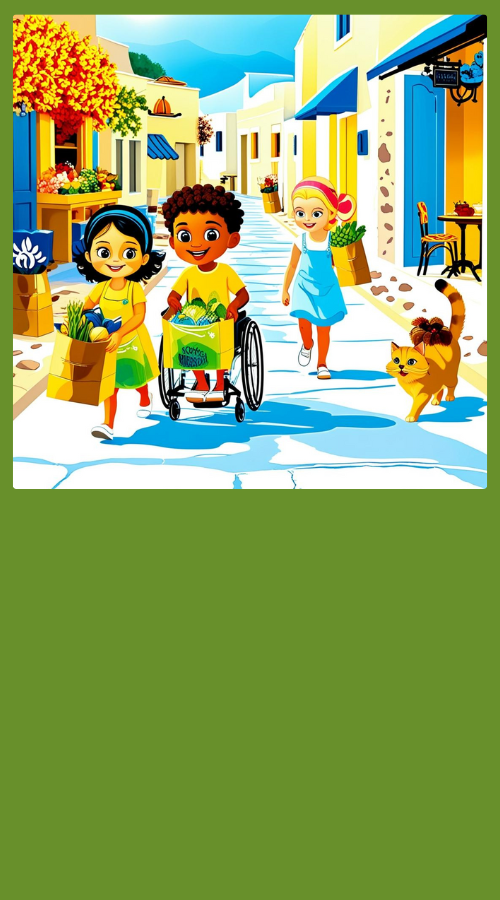
Plastic-Free
Promise
Let's reduce plastic pollution! Say no to plastic bags and bottles, use reusable bags, and choose products with less packaging
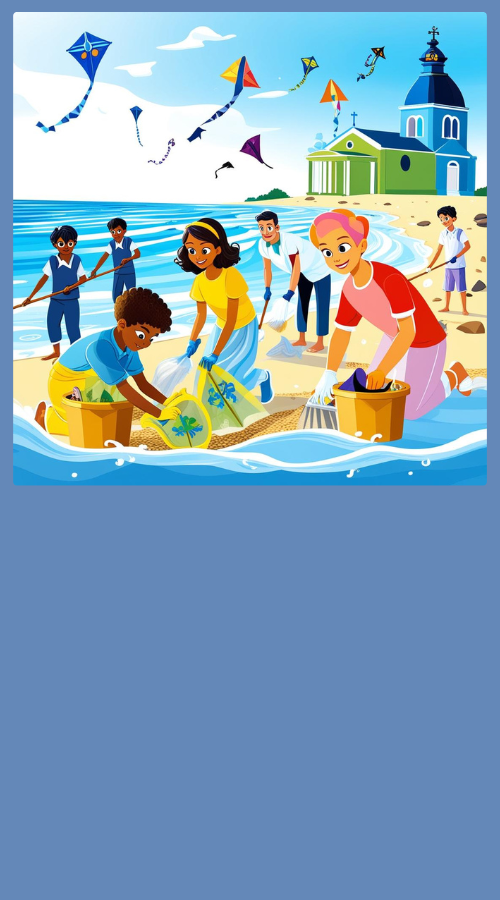
Act, Change,
Impact
Let's clean up
our beaches!
Join a beach cleanup or organize one with your friends and family.
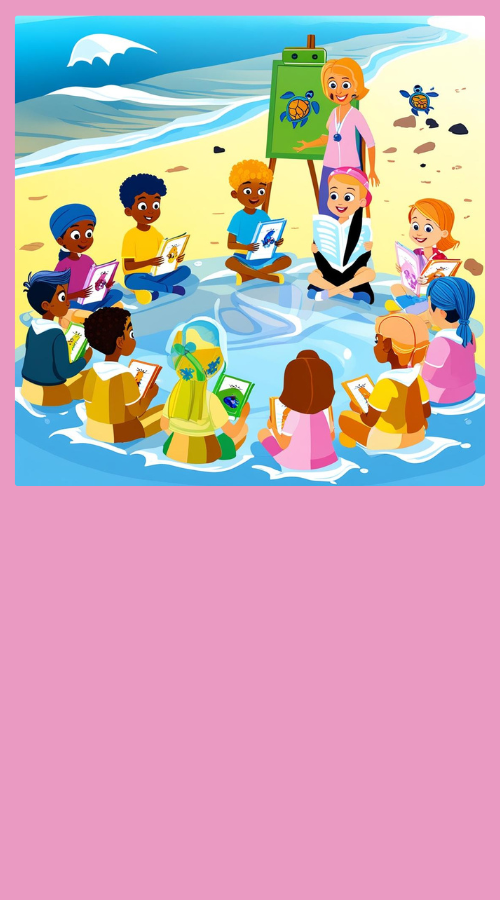
Learn, Share,
Grow
Let's be smart!
Learn about how our planet is changing and share what you learn with your friends and family.
UNDER THE SEA IS THE PLACE TO BE!
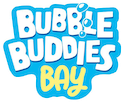
I About Us I Cookies I Terms of Use I Privacy Policy I Accessibility I Contact I
©2024 Webra Group Ltd - inspired by the FISHSOUP book series by George Lebesis, Illustrated by Tamsin Baker.
